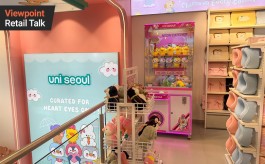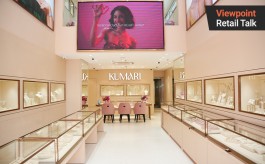‘Clients today expect store designs to contribute directly to their profitability'
By Niranjan Talekar | May 22, 2024
Rajan Vernekar, Managing Director of Rave Design, discusses the integration of technology in store design, rising client expectations, and the future potential of the retail design industry in this exclusive conversation with Retail4Growth as part of our ‘Business of Design’ series.
"The Indian retail design market is thriving," says Rajan Vernekar, Managing Director of Rave Design, as he sheds light on current trends, client expectations and the industry's future potential in this exclusive conversation with Retail4Growth.

Reiterating his point, Rajan shares that the Indian retail design industry is currently valued at around $1.5 billion with immense potential for growth. "The industry is poised to expand significantly, with increasing consumer demand for better shopping experiences and the entry of global brands, there is a vast scope for innovation and growth," Rajan shares.
Increasing Store Design Spends
The growth is reflected in the upward trend in spending on store designs. As Rajan says, "There is a clear increase in design budgets. Retailers are willing to invest more in creating immersive and engaging environments." This rise in expenditure is driven by the need to differentiate and provide unique shopping experiences that can attract and retain customers.
Need for functional spaces
Further, sharing his observations on current market trends, Rajan highlights a shift towards more sophisticated, technology-integrated retail environments and cites several new projects that emphasise innovative design solutions tailored to enhance customer experiences. What is noteworthy however, as Rajan points out, is that these projects are not just about aesthetics, but also about creating spaces that are functional and responsive to changing consumer behaviours.
Rising Expectations and the Demand for ROI
While the spends on store design increase, retail clients are also under immense pressure today to ensure that every investment yields tangible returns. This means greater thrust on making store design count. Rajan agrees, "Clients are now more focused on the ROI of their investments. They expect store designs to directly contribute to their profitability." This expectation necessitates a strategic approach where design and functionality align seamlessly with the brand's business goals.
Technology: Challenge or Opportunity?
Offering a differentiated and strategic store experience also entails the use of immersive technologies. But the integration of technology in retail spaces is both a challenge and an opportunity, feels Rajan. "Front tech integration, such as digital displays and smart fitting rooms, can significantly enhance customer engagement. However, it requires careful planning and execution." The challenge lies in balancing tech advancements with the practical aspects of store operations and customer interactions, as he points out.
He however emphasises the transformative potential of technology in retail design. "Integrating advanced technology such as augmented reality (AR) and virtual reality (VR) can create immersive shopping experiences," he explains. These technologies allow customers to visualise products in different settings and make more informed purchasing decisions, thereby enhancing overall satisfaction and driving sales.
Design Flexibility and Sustainability
But even as technology becomes increasingly more integral to store experience, another key trend in the industry is the move towards flexible and sustainable design solutions. Explaining this, Rajan says,"Retail spaces need to be adaptable to changing trends and consumer preferences. This includes modular fixtures and energy-efficient lighting systems that can be easily reconfigured to suit different needs. Sustainability is also a major focus, with designers incorporating eco-friendly materials and practices to minimise the environmental impact of retail spaces.”
The Role of Human-Centric Design
Beyond everything else, however, at the heart of the effective retail design, is a deep understanding of human behaviour. As Rajan says, "Designers must create spaces that resonate with customers on an emotional level." This involves using elements such as lighting, colour schemes, and spatial layouts to evoke specific moods and enhance the overall shopping experience. By focusing on the human aspect, designers can create environments that are both inviting and conducive to sales.
Pain Points in Retail Design
For retail design to focus on customer centric and experiential spaces also means getting past some challenges that the industry faces. Speaking about this, Rajan says. "One of the biggest pain points is aligning creative vision with budget constraints and practical limitations." Additionally, managing client expectations and keeping up with rapid technological advancements can be daunting, he adds.
But looking ahead, Rajan is optimistic about the future of the Indian retail design industry. "There is tremendous potential for growth and innovation," he asserts. “As retailers continue to invest in creating unique and engaging shopping experiences, the demand for skilled designers will only increase. By staying ahead of trends and continuously evolving, the industry can achieve new heights of success,” he sums up.




_140_270.jpg)

_140_270.jpg)


Comments